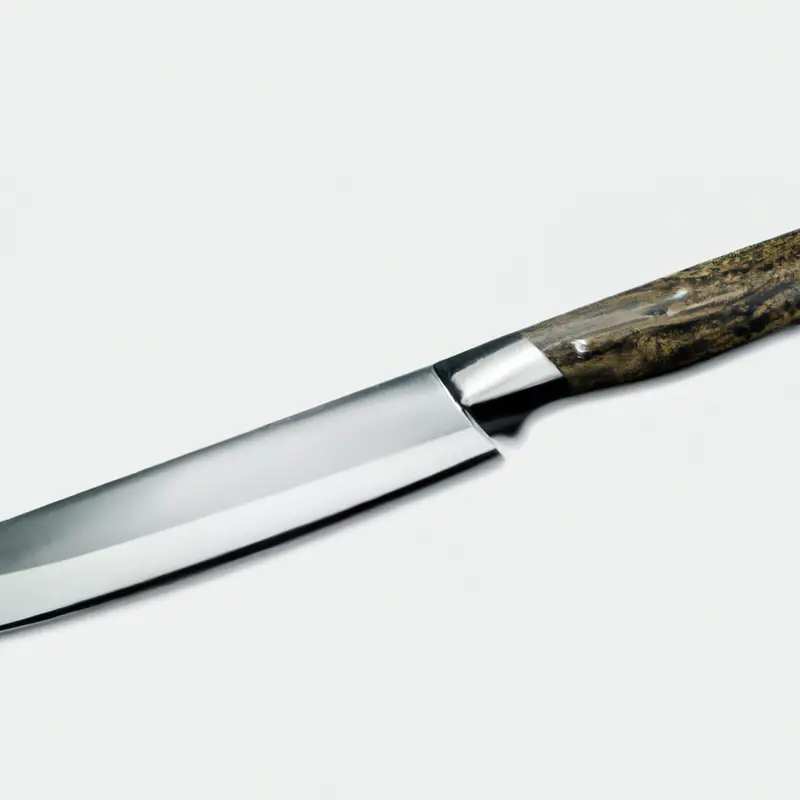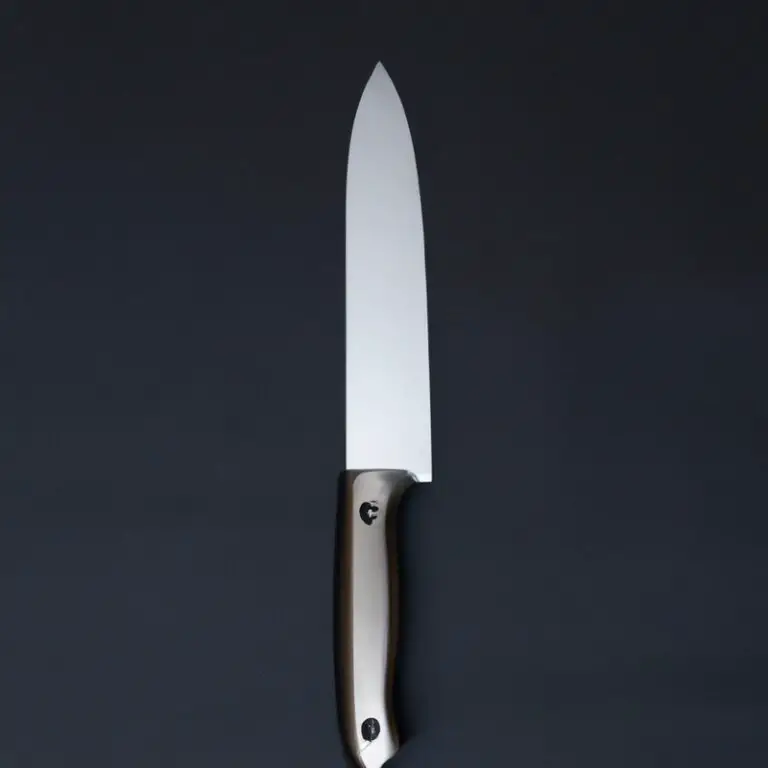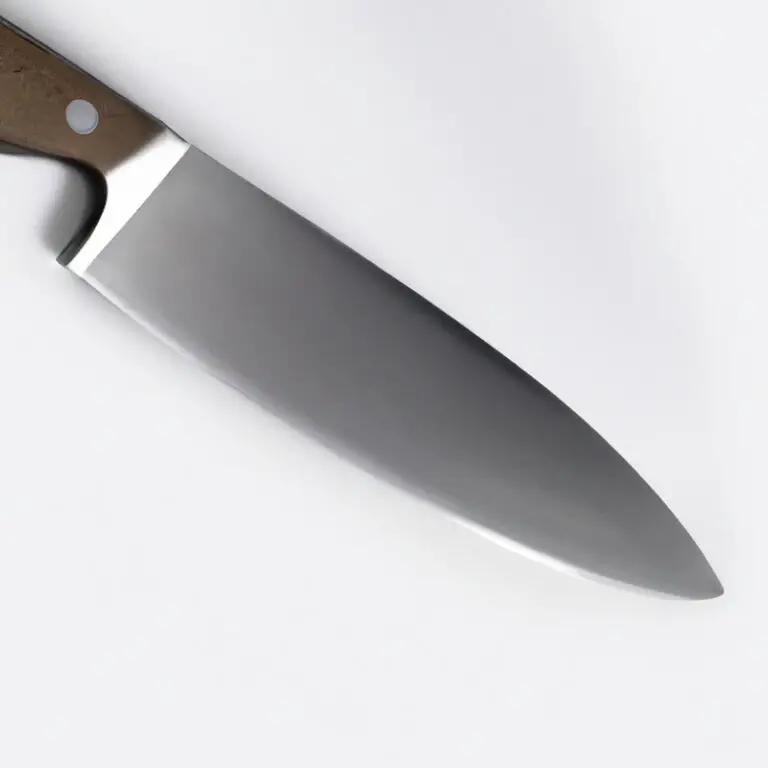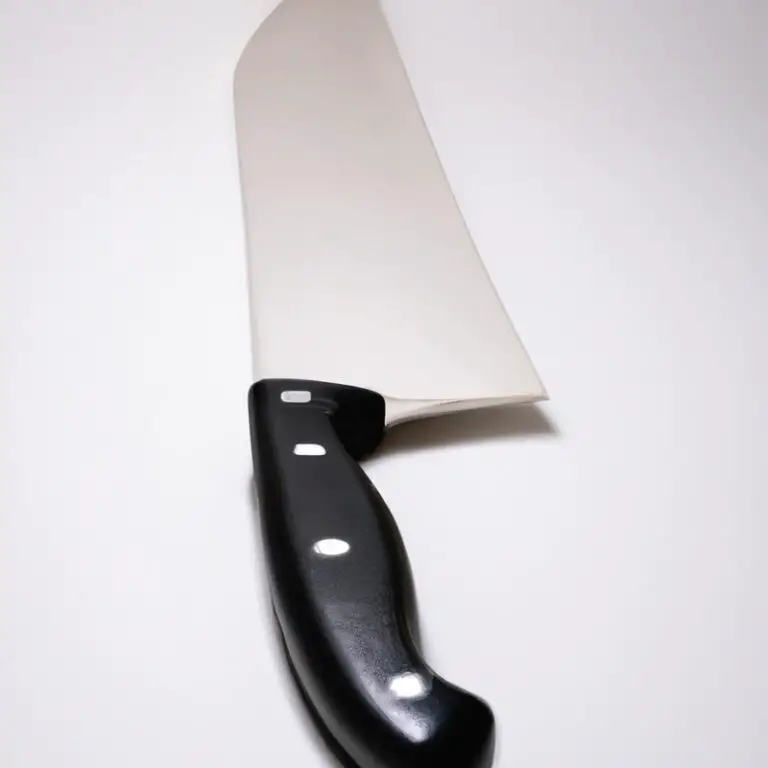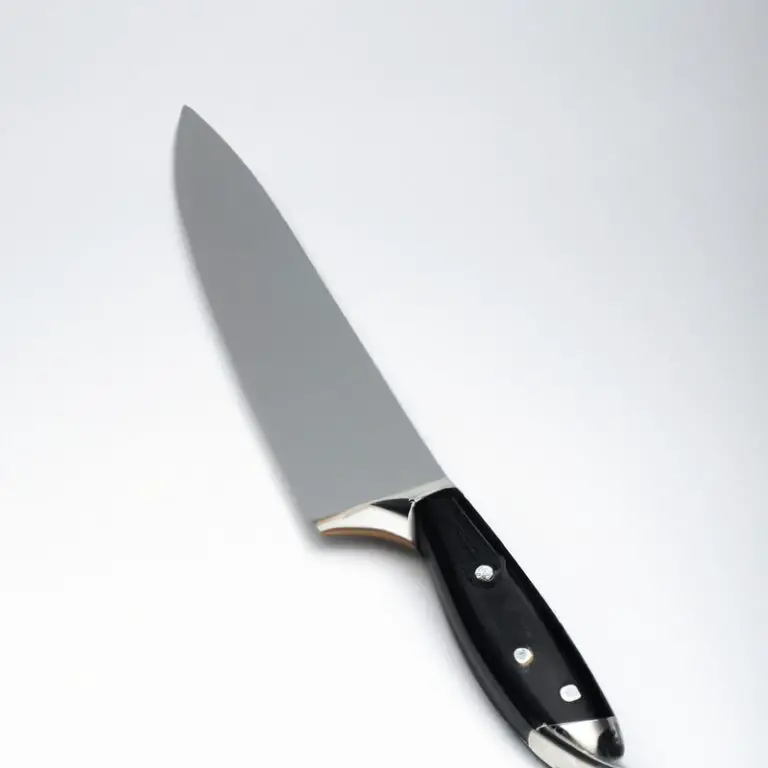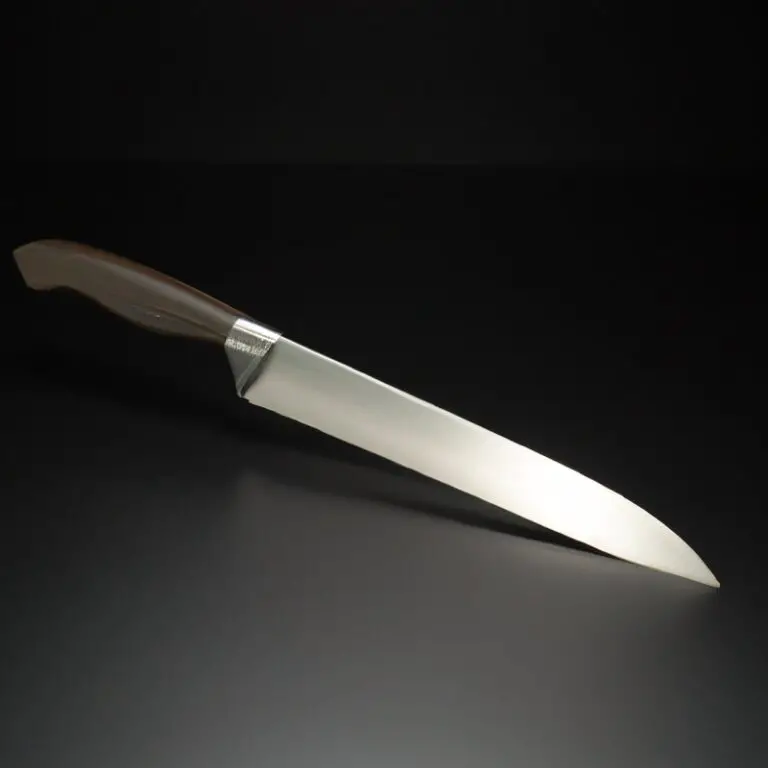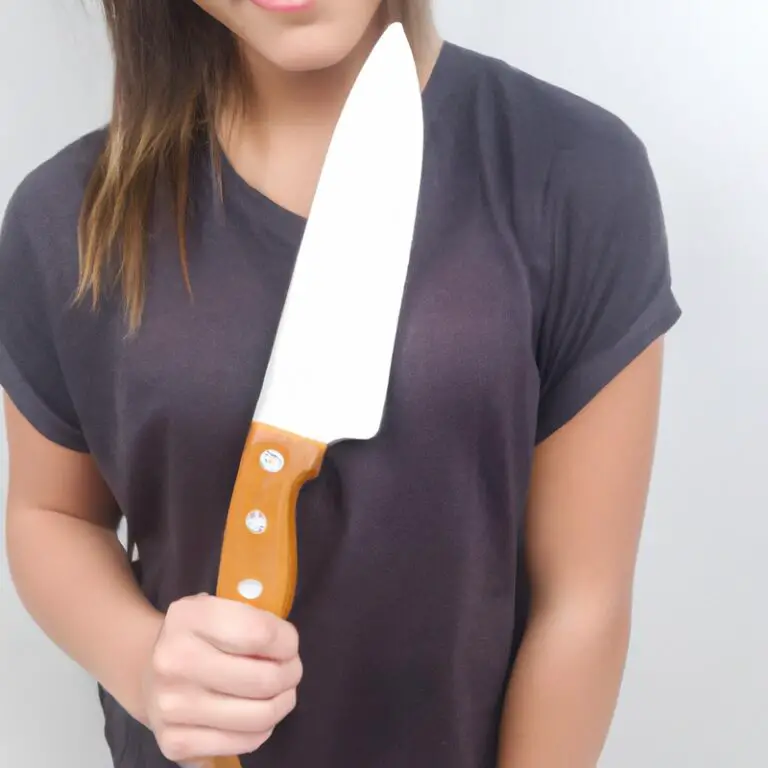How To Safely Pass a Chef Knife To Someone Else?
Key Takeaways:
- Always communicate clearly before passing a knife to someone else to ensure a safe transfer.
- Never pass a knife by the blade – always hand it over by the handle to avoid injury.
- Make sure the recipient is ready and in a safe position to receive the knife before passing it over.
- Proper knife handling and passing techniques are essential for a safe and efficient kitchen environment.
Do you know how to safely pass a chef knife to someone else? Proper knife handling is essential in the kitchen, and passing a knife incorrectly can lead to serious accidents.
In this article, we will discuss basic knife grip techniques, the correct way to hold a knife when handing it over, and the importance of clear communication in safe knife passing.
Plus, we’ll provide tips for safe knife passing in a fast-paced commercial kitchen and how to supervise novice cooks when passing knives. Whether you’re a seasoned chef or new kitchen staff, learning safe knife passing practices is a must.
| Steps | Description |
|---|---|
| Step 1 | Hold the knife by the handle with the blade facing downwards. |
| Step 2 | Approach the person who will take the knife. |
| Step 3 | Extend your arm with the handle of the knife towards the other person. |
| Step 4 | Let the other person grab the handle firmly and release your grip. |
| Step 5 | Make sure that the other person is in full control of the knife before walking away. |
Understanding the importance of safe knife handling in the kitchen
Safe knife handling is essential in the kitchen to prevent injuries and accidents. A sharp knife is more efficient and safer than a dull one since it will require less force and is less likely to slip.
Always remember to hold the knife with a firm grip and cut away from your hands.
When passing a knife to someone, ensure that the handle faces the receiver, and both individuals remain aware and focused. Novice cooks should be supervised while handling sharp knives to minimize the risk of accidents.
Following these safety precautions will help maintain a safe working environment in the kitchen.
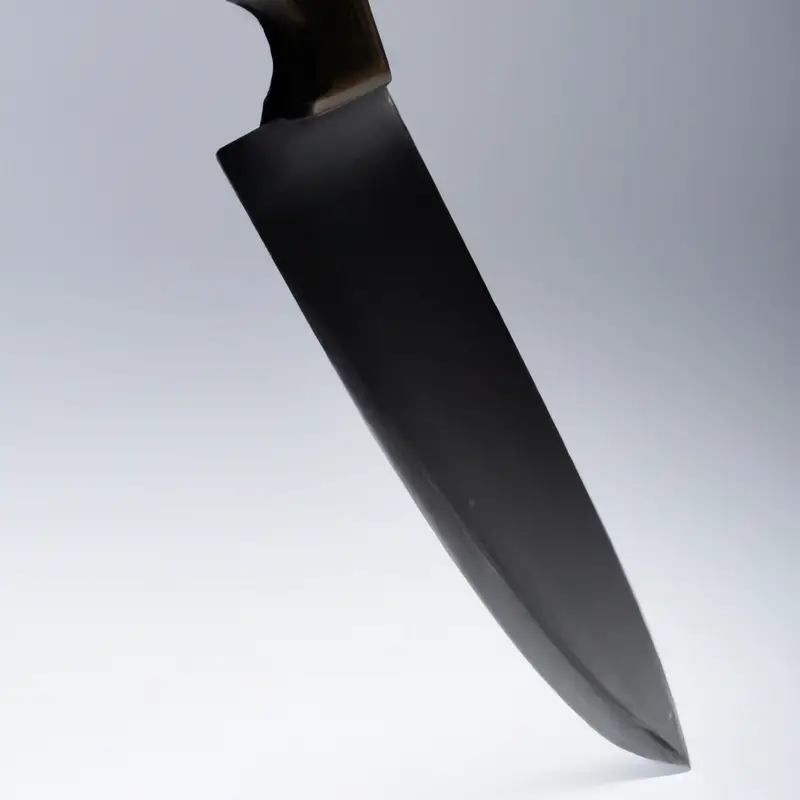
The potential dangers of improperly passing a kitchen knife
Improperly passing a kitchen knife can lead to serious injuries and even fatalities. According to the Centers for Disease Control and Prevention (CDC), there were an estimated 1.2 million emergency department visits for knife-related injuries in the United States in 2019.
Some of the potential dangers of improperly passing a knife include accidentally dropping it, misjudging the distance, and not communicating clearly with the recipient.
If the person receiving the knife is distracted or not paying attention, it can also lead to accidents and injuries. In a fast-paced commercial kitchen, the risk of improper knife handling and passing is even higher.
Novice cooks may not be as skilled at handling knives, so it’s important to supervise them closely when they are passing knives.
To prevent accidents, it’s crucial to follow safe knife handling and passing techniques. This includes holding the knife correctly and communicating clearly with the recipient.
Always make sure the person receiving the knife is paying attention and aware of the knife being passed to them.
Teaching safe knife passing practices to new kitchen staff can also help prevent accidents. By prioritizing safety and proper technique, we can reduce the risk of injuries and create a safer working environment in the kitchen.
Basic knife grip techniques for safe handling and passing
When it comes to handling and passing knives, safety should always be the top priority. To ensure safe knife passing, it’s essential to use proper grip techniques.
The most commonly used grip technique is known as the pinch grip.
In this grip, the blade is held between the thumb and the first finger, with the other three fingers wrapped around the handle. This grip provides excellent control and allows you to guide the blade with precision and accuracy.
Another grip technique that is commonly used is the handle grip.
In this grip, the handle is firmly held with the first three fingers, while the thumb rests on the handle’s spine, providing support and stability. The handle grip is appropriate when you’re passing a knife to someone who’s new to kitchen work or has limited experience with knives.
It’s essential to remember that when using either grip technique, the blade should always face downwards while holding it, ensuring the sharp edge is kept away from your body and anyone around you.
Communication is also key to safe knife passing. Clear and concise verbal communication should be maintained while passing the knife to avoid any misunderstandings or accidents.
Learning and practicing basic knife grip techniques is vital to ensure safe knife handling and passing.
Using the pinch or handle grip and maintaining clear communication while passing a knife can prevent injuries and accidents in the kitchen.
The correct way to hold a knife when handing it over to someone else
When passing a knife to someone else, it’s important to ensure that it is done safely. The correct way to hold a knife when handing it over to someone else is to hold the handle firmly with the blade facing downwards and towards the other person.
This allows the person receiving the knife to safely grip the handle without getting cut by the blade.
Avoid holding the knife by the blade or passing it over with the blade exposed. This could potentially lead to serious injuries.
Always communicate and make sure that the person receiving the knife is aware and ready to take it before passing it over.
It’s also important to emphasize the proper grip technique when holding a knife, as this will ensure that the person holding it maintains full control over the blade. This can help prevent accidents and injuries while working in the kitchen.
The role of clear communication in safe knife passing
Clear communication plays a crucial role in safe knife passing. It is essential to communicate clearly about who will be receiving the knife, the manner in which it will be passed, and any safety concerns before passing the knife.
Always ensure that the receiver has a clear hand and is ready to receive the knife before passing it.
Additionally, never throw or toss a knife, which can lead to accidents and injuries. By communicating effectively and taking the necessary precautions, the risks of accidents when passing a knife can be significantly reduced.
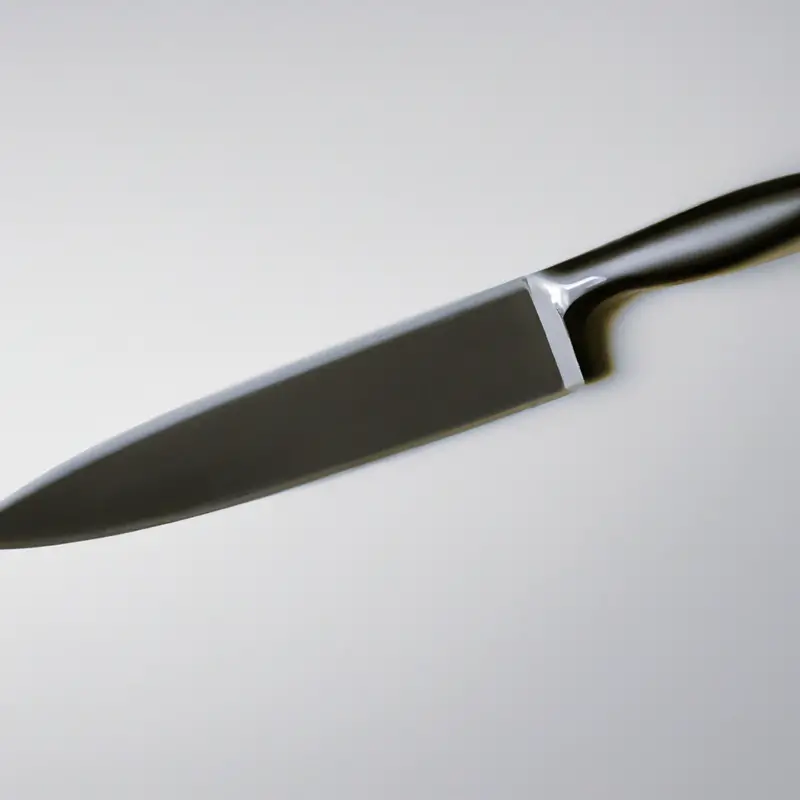
How to properly place a knife on a cutting board for someone else
When it comes to placing a knife on a cutting board for someone else, it’s essential to do it correctly to prevent any accidents. Place the knife at the edge of the cutting board with the blade facing away from the person receiving it.
Ensure that the handle is within reach and facing towards the receiver.
It’s important to communicate clearly when passing the knife and to wait until the person acknowledges they are ready to receive it before letting go. Also, make sure the cutting board is stable and won’t move while the receiver is taking the knife.
By following these simple steps, you can safely pass a chef knife to someone else without any mishaps.
Tips for safe knife passing in a fast-paced commercial kitchen
In a fast-paced commercial kitchen, safe knife passing is crucial to prevent accidents and injuries. Here are some tips to ensure safe knife passing:
- Always communicate clearly: Before passing a knife, make sure to communicate with the person receiving it. Use clear verbal cues or hand signals to ensure that they are ready to take it.
- Pass the knife with the handle first: When passing a knife, always pass it with the handle towards the receiver. This allows them to securely grip the knife and prevents the blade from accidentally striking them.
- Keep knives sharp: Blunt knives require more force, which can increase the risk of accidents. Always keep knives sharp to reduce the amount of force needed for cutting, which decreases the chances of mishandling.
- Supervise novice cooks: When working with novice cooks, don’t assume that they know how to handle knives properly. Supervise them and show them the safe techniques for passing knives.
- Avoid passing knives to distracted individuals: Never pass a knife to somebody who is busy or distracted. Wait until they are ready and focused on receiving the knife.
By following these tips, you can ensure that knife passing is safe and efficient in a fast-paced commercial kitchen environment.
The importance of supervising novice cooks when passing knives
Supervising novice cooks when passing knives is crucial to ensure their safety and prevent accidents in the kitchen. Novice cooks may not have the necessary experience or knowledge to handle knives properly, increasing the risk of injury.
As a supervisor or experienced cook, it’s important to teach new employees safe handling and passing techniques and monitor their progress.
Additionally, taking the time to show them the correct way to hold a knife and communicate clearly during knife passing can greatly reduce the risk of injury. If you observe a novice cook who is distracted or not paying attention while working with a knife, it’s essential to intervene immediately and guide them back on track.
It only takes a split second for an accident to occur, so it’s crucial to have a vigilant eye and a watchful presence in the kitchen.
Overall, supervising novice cooks when passing knives is crucial to ensuring a safe and efficient kitchen environment. By investing time in proper training and supervision, you can minimize the risk of accidents and make the kitchen a safer place for everyone.
The danger of passing knives to someone who may be distracted or not paying attention
Passing a knife to someone who is distracted or not paying attention poses a significant danger in the kitchen. In fact, according to the U.S. Consumer Product Safety Commission, kitchen knives are responsible for nearly 10% of all injuries treated in emergency rooms.
Passing a knife to someone who is not aware of the exchange greatly increases the risk of accidental cuts or lacerations.
It is crucial to ensure that the recipient is alert and ready to receive the knife. When in doubt, wait until they are fully ready before passing the knife to avoid any potential harm.
Remember, safety should always be the top priority in the kitchen.
Teaching safe knife passing practices to new kitchen staff
Teaching safe knife passing practices to new kitchen staff is crucial to avoid accidents and injuries in the kitchen. Kitchen managers should provide comprehensive training on the proper way to hold and pass a knife, emphasizing the importance of clear communication and attention to detail during the process.
It is essential to supervise novice cooks carefully and advise against passing knives to anyone who may be distracted.
Additionally, managers should train staff on how to place a knife safely on a cutting board for someone else. By providing clear instructions and hands-on practice, new kitchen staff can learn safe knife passing practices that will ensure a safe and efficient kitchen environment.
Final Verdict
Proper chef knife handling and passing techniques are critical in ensuring a safe and efficient kitchen environment. By understanding the potential dangers of improper handling and passing, and by implementing the basic grip techniques and clear communication methods outlined in this article, kitchen staff can significantly reduce the risk of accidents and injuries.
Whether in a fast-paced commercial kitchen or a home kitchen, safe knife passing practices should always be followed.
As kitchen professionals or home cooks, it is our responsibility to supervise and teach safe knife passing practices to our colleagues and family members. By prioritizing safety and implementing these practical tips, we can all work towards building a safer kitchen and a healthier cooking experience.

